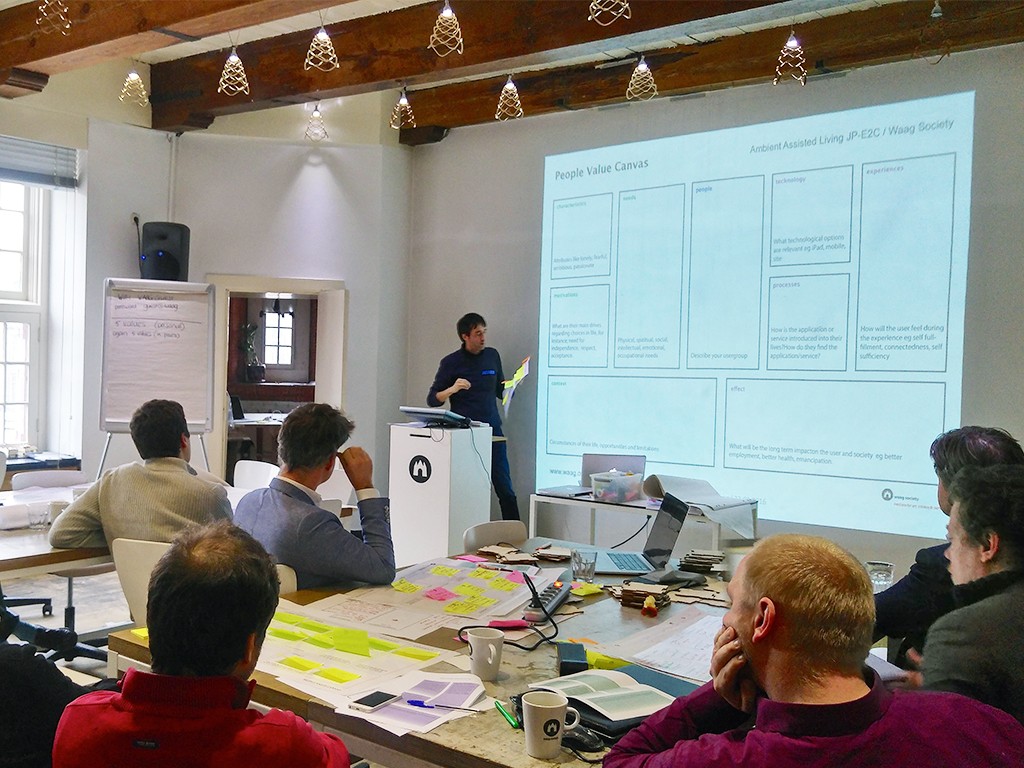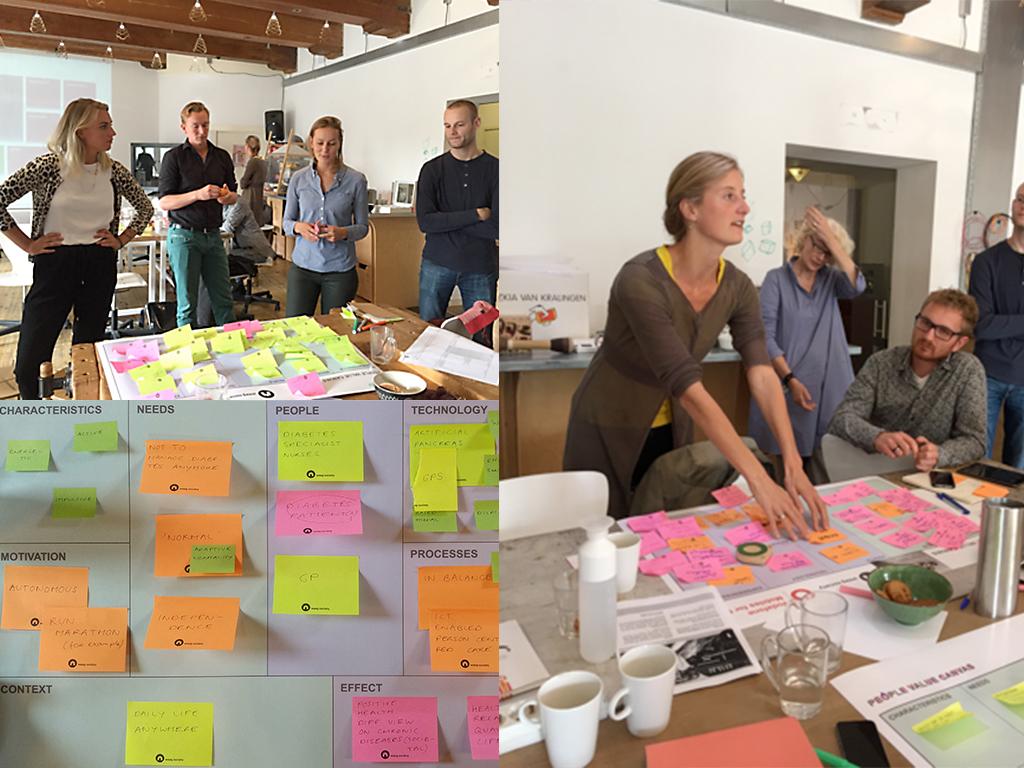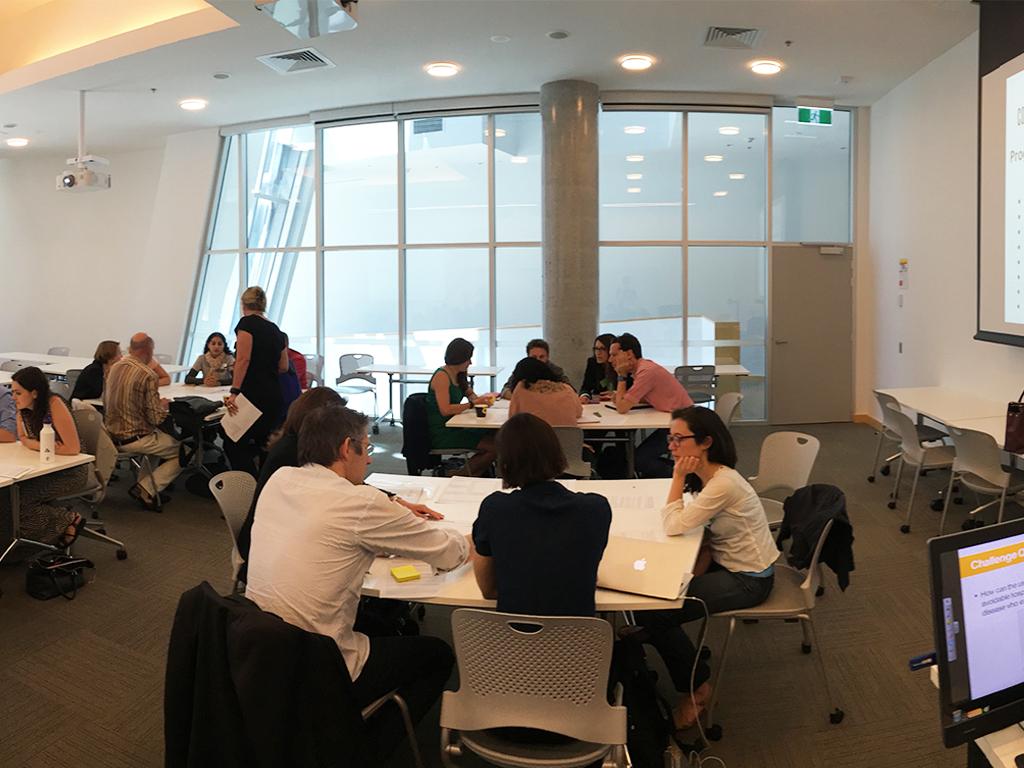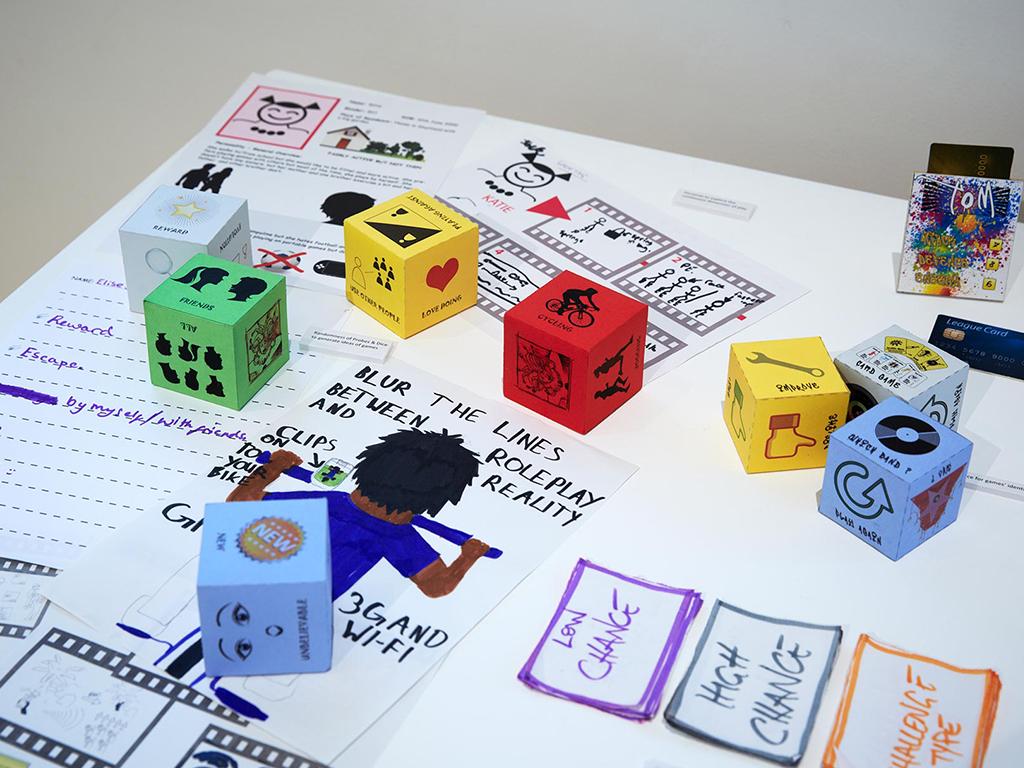
People Value Canvas
Users are experts on their own lives and experiences, and should be the driving force in the development process of new products and services. However, most business models we know lack detailed knowledge about individual people, making them operate on assumptions about ‘their customers’ that don’t reflect real needs and motivations. The People Value Canvas is a tool we developed to support designers and stakeholders in a systematic manner to gain insight into what users actually consider valuable.
Understanding people is key when using the People Value Canvas (PVC). The central idea behind the canvas is that a product or service has added value only if it satisfies user needs and fits user motivations. On the one hand, the canvas helps to structure users’ needs and preferences, their context and desired effect. On the other hand, it describes how a newly proposed solution could meet user-driven criteria. This way, the PVC helps to describe a value proposition and uses empathy as a means for social impact.
We created the PVC closely to the logic of the Business Model Canvas (Osterwalder, 2009), with a strong focus on creating value for the end user. The output of the People Value Canvas, a value proposition, is the starting point of the Business Model Canvas. Combining the two canvases ensures developing a foundation for effective, and economically sustainable solutions.
Using the Canvas
Waag used the People Value Canvas in various internal and external projects. It consists of nine building blocks, describing the input that has to be provided in order to establish the value proposition for the user. Roughly, the canvas is divided into two parts: ‘user insights’ and ‘interventions’. The first part should reflect the outcomes of your user research whilst the second part describes your envisioned intervention or solution. The PVC can be used iteratively when developing and refining concepts, and provides guidance when discussing interdependencies between the different design aspects.
The People Value Canvas toolbox consist of a printable template and a brief manual on how to fill in the canvas. You can find the documents under 'Publications' below.
Further reading
More information can be found in the following publications:
- Wildevuur, S. E., Van Dijk D., Äyväri, A., Bjerre, M., Hammer-Jakobsen T., and Lund, J. Connect: Design for an Empathic Society. Amsterdam: BIS Publications, 2013.
- Wildevuur, S. E., Van Dijk, D., Schot, M. Enhancing the value of social innovation: introducing the ‘People Value Canvas’ to support designers in value creation. Paper presented at the Colors of Care: The 9th International Conference on Design & Emotion, Bogotá, October 6-10, 2014.
- Wildevuur, S.E., Van Dijk, D., Hammer-Jakobsen, H., Äyväri, A. Designing value to enable chronic disease management through information and communication technology: the People Value Canvas. Paper presented at the Third European Conference on Design4Health 2015, Sheffield, 13 - 16 July, 2015.
The People Value Canvas was developed within the Express to Connect project Express to Connect project, supported by EU-JP Ambient Assisted Living. For questions or extra guidance, please contact Waag's Creative Care Lab.
Project duration
Links
Publications
Financiers
- Ambient Assisted Living Joint Programme (AAL-2)
- COMMIT



